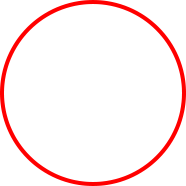In a world characterized by information overload and visual clutter, the concept of “less is more” has never been more relevant. The realm of logo design has embraced this philosophy wholeheartedly, giving rise to the enduring trend of minimalist logos. These seemingly simple designs possess a unique ability to captivate, communicate, and etch themselves into our collective consciousness. In this article, we delve into the allure of minimalist logo design, exploring its power, principles, and impact on brand recognition.
The Artistry of Minimalism
Minimalism in logo design is more than a style; it’s an art form that thrives on the premise of refining a concept to its purest essence. The key lies in paring down elements while retaining the ability to convey a brand’s identity succinctly. Think of the iconic Nike Swoosh or the golden arches of McDonald’s – these uncomplicated symbols resonate globally, proving that less can indeed be more powerful.
Strategic Understatement
The minimalist approach is far from arbitrary; it’s a strategic decision. By removing excess ornamentation, minimalist logos ensure that the focus remains on the core message. Each element is deliberate and purposeful, working together to communicate the brand’s ethos. This strategy not only captures attention but also creates a lasting impact, as the human mind is naturally drawn to simplicity.
Less Noise, More Recognition
In a world bombarded by sensory stimuli, the power of minimalist logos lies in their ability to stand out amidst the noise. A clean, uncluttered design allows for instant comprehension and recognition. Viewers don’t need to decipher complex imagery; instead, they grasp the message effortlessly. The result? A logo that remains imprinted in memory, ready to be recalled at the mention of the brand.
The Role of Negative Space
The clever use of negative space – the unoccupied area around and within a design – is a hallmark of minimalist logo design. This technique enhances the logo’s visual impact by inviting the viewer’s interpretation. FedEx’s arrow hidden within its letterforms or the bear cleverly concealed in the Toblerone mountain are prime examples of how negative space adds depth and intrigue to a seemingly simple design.
Color in Minimalism
Color in minimalist logos serves a specific purpose: to emphasize the essence. Limited color palettes ensure that the chosen hues carry meaning and evoke emotions. Take Google’s logo, for instance – each letter is a different color, reflecting the brand’s vibrancy and diversity. Minimalist color choices become synonymous with the brand, making the logo instantly recognizable even without accompanying text.
Beyond Aesthetics: Brand Values in Simplicity
Minimalist logos possess an inherent ability to communicate a brand’s values through visual economy. When a brand embraces minimalism, it sends a message of clarity, transparency, and authenticity. The deliberate decision to forego complexity implies confidence – a statement that the brand’s worth lies in its substance, not superficial embellishments.
Universal Language
One of the most remarkable aspects of minimalist logos is their universality. Stripped of cultural specificity and intricate details, they become a visual language understood across borders and languages. This universality strengthens brand recognition on a global scale, an asset in an interconnected world where businesses expand beyond geographical boundaries.
Minimalism and Timelessness
The minimalist approach to logo design has an innate timelessness. Trends come and go, but simplicity persists. Minimalist logos don’t rely on fashionable elements that might fade with time; instead, they embody enduring principles of design that transcend eras. A well-crafted minimalist logo remains relevant, unburdened by the constraints of passing trends.
Embracing the Trend: Future-Proofing Brands
Minimalist logos are not just a trend; they are a strategy for future-proofing brands. In an ever-evolving landscape, where visual identities require adaptability, minimalist designs possess inherent flexibility. They transition seamlessly across mediums, from business cards to mobile screens, retaining their impact and legibility.


